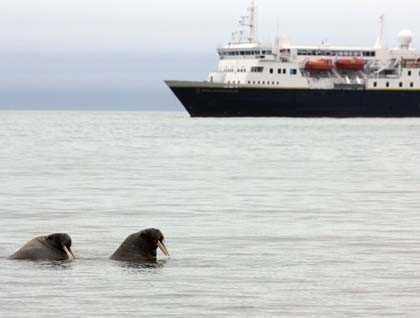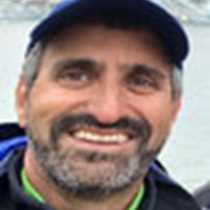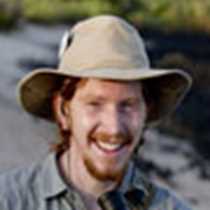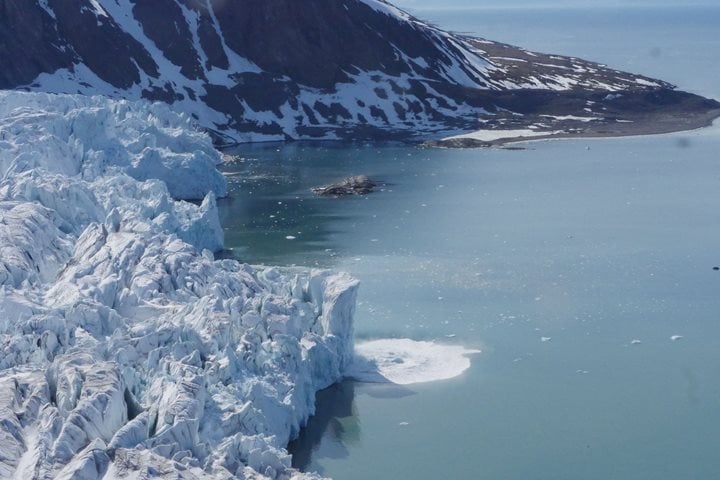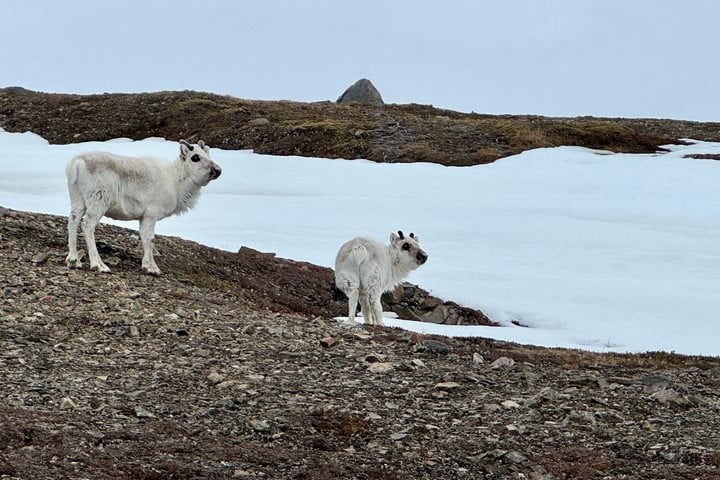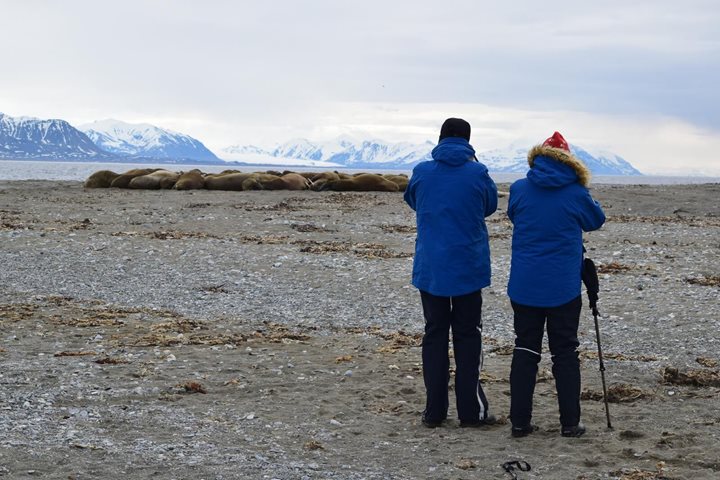The Arctic is an extreme environment, a place where survival and life and death are no casual matter, where only uniquely-adapted life forms and intrepid explorers can make a living.
One well-adapted arctic organism is the walrus, an unusual member of the fin-footed beasts, the pinnipeds, falling somewhere between seal and sea lion, without external earflaps but able to maneuver on land. Walruses are certainly curious creations with canine tusks, large bodies, small eyes, tough hides, dexterous whiskers and powerful clam-suctioning ability.
This morning Arctic enthusiasts landed by Zodiac downwind from a group of walruses hauled out at Kapp Lee on Edgeøya island. Just behind the walruses stood three huts, including a unique century-old octagonal one, evidence of humans braving the elements in this same place. We walked past a veritable boneyard of walrus parts, evidence of previous harvesting, to a respectful distance from a pile of a half dozen male walruses, ashore to rest and rub, tusks skyward. These mythical creatures were driven to near extinction after centuries of slaughter for their ivory tusks and for use of their tough skin as machine belts in early industrial days. Protected in Svalbard for over sixty years now, the walruses seem to be reclaiming old territory, including the more recent return of females and calves. It was reassuring to see living walruses today in juxtaposition to the blanching evidence of hundreds of strewn bones. Nutrients leaching out from the bones feed productive moss beds and flowering arctic plants. Life and death go hand in hand somehow. As we quietly observed the beached beasts, more walruses swam in the shallows, curiously investigating the humans ashore.
Back onboard we were mesmerized by a presentation by Global Perspective Guest Speaker Joe MacInnis, physician for James Cameron on his recent dive to the bottom of the Mariana Trench and leader of several deep sea ventures including multiple trips under Arctic sea ice and to the wreck of the Titanic. We learned that leadership in extreme environments requires eloquence, empathy and endurance, qualities evident in our guest speaker.
As fog settled down on us in Storfjord we sought a clearer microclimate in front of Negribreen Glacier, the captain expertly bringing us in to aurally experience the lapping of waves on the glacier, bergie sizzle, and the calling of kittiwakes in an ethereal atmosphere where sea, sky, and ice seemed as one. In the evening, we traveled east through Freemansundet into pack ice on our continued search for animals uniquely suited for life in this high Arctic environment.
Note that at this point this daily expedition report had been completed, yet our evening was to hold another whole world of experience. In the ice in Olgastretet off Barentsøya we discovered several polar bears, including quality sightings of a mother and yearling interacting, a swimming bear, and a bear on a kill. A beautiful creamy-colored mother and second year cub highlighted our after dinner activities, the pair swimming and jumping between floes, the cub nursing before us on the ice, and both mom and yearling rolling, stretching and sliding around on their bellies and backs. The midnight sun broke through some clouds just around midnight as we watched another bear feeding on a seal, with pure white ivory gulls flying about. Finally people headed off to bed after truly being treated to a full day’s worth of experience in this extreme and beautiful Arctic environment.

